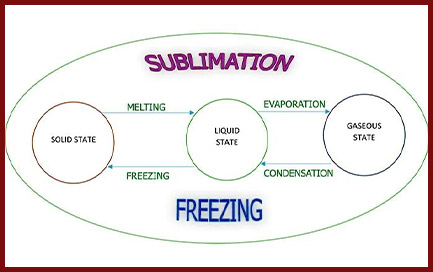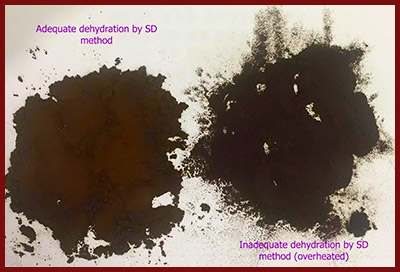What Makes a High-Quality Chaga Extract?
Today, Chaga mushroom extract is widely recognized in many countries as an effective natural remedy for supporting health and preventing various ailments. Since the 1950s, it has even been officially approved in Russia for the prevention and treatment of cancer.
However, few people realize that not all Chaga extracts are created equal. Unfortunately, many products on the market are of questionable quality and may offer little to no real health benefits.
That’s exactly why I decided to write this article—to help Chaga users and health-conscious consumers understand what defines a truly high-quality Chaga extract and how to distinguish genuine products from low-grade imitations.
Over the years, our company has received countless questions from customers asking how to tell the difference between good and bad Chaga extracts. In this article, I’ll explain the essential conditions for producing premium-quality Chaga extract—based on science, real manufacturing experience, and over 20 years of working in the field.
Essential Conditions for Producing High-Quality Chaga Extract
1. High-Quality Wild-Grown Chaga Mushroom as Raw Material
To produce the highest quality Chaga extract, producers must use raw materials of the best quality. "Best quality" means ecological purity and appropriate chemical composition of raw Chaga mushrooms collected in the wild. This strongly depends on the geographical location where the Chaga was picked.
We believe that the most valuable Chaga grows in the taiga forests of Siberia. Due to the extraordinary content of the chromogenic complex, melanins, and polysaccharides, Siberian Chaga is superior to Chaga collected in other regions.
Artificially cultivated Chaga mushrooms, grown in controlled environments, lack the most valuable bioactive substances like Chaga humic-like acids (chromogenic complex), only found in wild Chaga. Beware of farm-grown Chaga mushrooms—they cannot offer the same health benefits.
2. Appropriate Extraction Method
For Chaga extract, the extraction method must be water-based, not alcohol-based. Water extraction helps withdraw key water-soluble substances like the chromogenic complex (melanins and Chaga humic acids), which are Chaga’s most valuable components.
Some sellers focus on polysaccharide content, but polysaccharides and B-glucans are common in many foods. The real hallmark of wild Chaga is its chromogenic complex and melanins.
The chemical structure of Chaga melanin closely resembles that of human melanin. This compound dissolves only in water, requiring hot—but not too hot—water for extraction. The temperature must not exceed 60°C (140°F) to preserve these sensitive compounds.
3. Appropriate Dehydration Method
Among Chaga consumers, dehydration is one of the most discussed topics.
Common questions include:
- “Is this a real FD (Freeze-Dried) extract?”
- “How can I distinguish freeze-dried from spray-dried Chaga extract?”
The Dehydration Process
The Chaga extract manufacturing process typically involves seven steps:
- Preparation of raw material.
- Crushing Chaga into smaller chunks.
- Extraction in evaporation and vacuum units.
- Separation of the half-liquid Chaga mass.
- Dehydration.
- Grinding the dried extract into fine powder.
- Packaging and storage.
Dehydration Methods
There are three commonly used dehydration methods in Chaga extract manufacturing:
- Spray-Dry Method: Hot compressed air (over 150°C) sprays and dries the extract rapidly. This high heat damages Chaga’s molecular structure.
- Infrared Drying (IR): Heat-based drying in infrared ovens, also causing thermal degradation.
- Freeze-Drying (Sublimation): Low-temperature dehydration by sublimating frozen water under vacuum. This preserves Chaga’s molecular integrity and bioactivity.
Unfortunately, over 90% of manufacturers use spray-dry or IR methods due to cost savings—despite reduced product quality. They often continue to market their extracts as high in polysaccharides and chromogenic complex, even though thermal processing degrades these key compounds.
4. Sublimation (Freeze-Dry) Dehydration: The Gold Standard
Sublimation (or lyophilization) removes water from the frozen Chaga extract without passing through the liquid phase. The word "lyophilization" literally means "dissolve with love" in Greek.

Freeze-drying offers several key benefits:
- Preserves Chaga’s chemical and biological integrity.
- Maintains flavor, taste, and bioactive compounds.
- Provides a highly water-soluble extract that dissolves instantly.
- Ensures a longer shelf life (up to 3 years with proper storage).
However, freeze-drying is expensive, time-consuming, and requires special equipment and expertise. This is why many producers avoid it.
5. Color of Chaga Extract: Does Darker Mean Better?
It’s commonly believed that a dark brown or black color signals high-quality Chaga extract. But that’s not always the case.
Dark color can result from:
- Freeze-Dried Chaga: Black color due to high melanin content—a good sign.
- Spray-Dried Chaga: Dark brown or black color due to overheating—a bad sign (see the picture below).

One visual clue: Freeze-dried Chaga often has shiny, crystal-like particles because of its preserved melanin content. Spray-dried Chaga lacks this.
Conclusion
Chaga extract produced by freeze-drying retains its organoleptic and chemical properties, is instantly water-soluble, lightweight, and has a prolonged shelf life. Properly stored, freeze-dried Chaga can stay fresh for 3 years or more while maintaining all its nutrients and bioactive compounds.
Also read: Oxalic Acid in Chaga (safety & lab results).
Final Note
We don’t offer spray-dried Chaga extract on this website. Why? Because we don’t want to deprive people of their health expectations—especially those who may consider Chaga their last chance for better health.
Remember: When it comes to Chaga extract, quality matters more than quantity. It’s not just about the numbers on a lab report—it’s about how "alive" and bioavailable the extract is to your body.
Heat-damaged Chaga molecules may remain chemically “Chaga,” but their molecular structure becomes altered and less beneficial. Your body struggles to use these damaged molecules efficiently.
In summary: Only wild-harvested, water-extracted, and freeze-dried Chaga extract delivers the full health benefits your body needs.